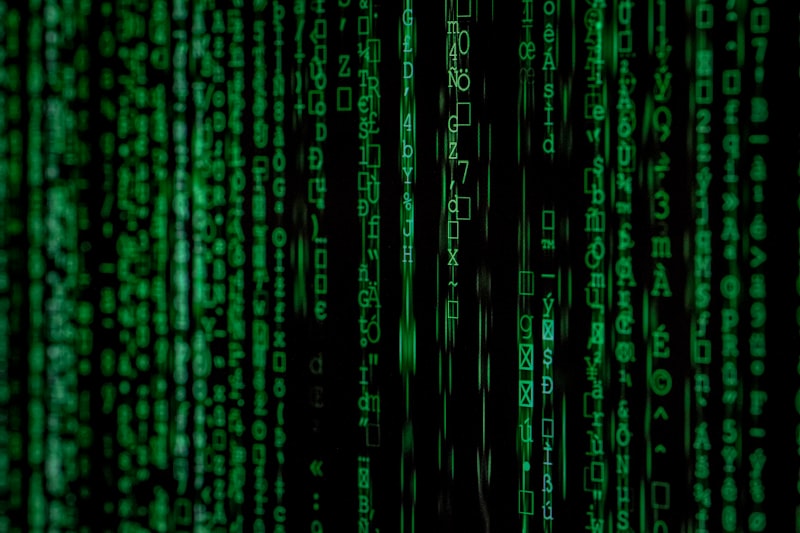Artificial Intelligence and Machine Learning Algorithms

Are you ready to delve into the exciting world of Artificial Intelligence (AI) and Machine Learning (ML) algorithms? These cutting-edge technologies have taken the world by storm, revolutionizing industries and transforming the way we live and work. In this article, we will explore the intricate details of AI and ML algorithms and uncover their incredible potential.
Artificial Intelligence involves the development of intelligent machines that can perform tasks requiring human intelligence. It enables computers to think, learn, and make decisions just like humans but at a much faster pace. Machine Learning, on the other hand, is a subset of AI that focuses on creating algorithms capable of learning from data and improving their performance over time.
Imagine having an AI-powered virtual assistant who can understand your voice commands and respond to your queries in real-time. This remarkable capability is made possible through Natural Language Processing (NLP), a branch of AI that allows computers to understand and interpret human language. NLP algorithms analyze patterns, syntax, and context to provide accurate and meaningful responses, making interactions with technology more intuitive and efficient.

In the field of healthcare, AI and ML algorithms are transforming patient care and diagnosis. By analyzing vast amounts of medical data, these algorithms can detect patterns and identify potential diseases at an early stage, leading to timely interventions and improved outcomes. Radiology is another area greatly benefiting from AI algorithms, where they assist in detecting abnormalities in medical images, reducing diagnostic errors, and expediting treatments.
The retail industry is also undergoing a significant transformation thanks to AI and ML algorithms. With the ability to analyze customer behavior and preferences, these algorithms power personalized recommendations, enhancing the overall shopping experience. They optimize supply chain management, predicting demand, minimizing inventory costs, and streamlining operations.

Furthermore, AI and ML algorithms are reshaping the transportation sector. Self-driving cars rely on sophisticated algorithms that process real-time data from sensors and cameras to navigate roads safely. Improved traffic management systems, enabled by AI, can reduce congestion and enhance commuting efficiency, saving time and resources.
Artificial Intelligence and Machine Learning algorithms are paving the way for a future where intelligent machines work alongside humans, augmenting our capabilities and transforming industries across the board. From healthcare to retail, transportation to customer service, these algorithms have the potential to revolutionize how we live and interact with technology. So, fasten your seatbelts and get ready to witness the astounding power of AI and ML algorithms as they shape our world in unprecedented ways.
Revolutionizing Industries: How Artificial Intelligence and Machine Learning Algorithms are Reshaping the Future

Introduction:
Imagine a world where machines can learn, adapt, and make decisions just like humans. This is no longer a scene from a sci-fi movie; it is the reality we are living in today. Artificial Intelligence (AI) and Machine Learning (ML) algorithms have taken center stage, revolutionizing industries across the globe. From healthcare to finance, transportation to education, AI and ML are reshaping the future as we know it.
Unleashing the Power of AI and ML:
AI and ML technologies are empowering businesses to accomplish tasks that were once unimaginable. By leveraging vast amounts of data, these algorithms enable computers to analyze, interpret, and extract valuable insights, providing businesses with a competitive edge. Whether it’s predicting consumer behavior, automating processes, or optimizing resource allocation, AI and ML are transforming industries by streamlining operations and enhancing efficiency.
Transforming Healthcare:
In the realm of healthcare, AI and ML have brought about tremendous breakthroughs. These technologies have the potential to diagnose diseases more accurately and at an early stage, improving patient outcomes. ML algorithms can analyze medical images, such as X-rays and MRIs, detecting abnormalities that may go unnoticed by human eyes. Moreover, AI-powered chatbots and virtual assistants offer personalized patient care, answering queries promptly and assisting in triage.
Revolutionizing Finance:
AI and ML are disrupting the financial sector by introducing advanced risk management techniques and fraud detection systems. These algorithms can analyze vast amounts of financial data in real-time, identifying patterns and anomalies that signify potential risks. With AI-powered robo-advisors, investors receive tailored investment recommendations based on their goals and risk appetite. This technology has democratized investing, making it accessible to a broader range of individuals.

Enhancing Transportation:
Self-driving cars are no longer just a distant dream. AI and ML are at the core of autonomous vehicle technology, enabling cars to perceive their surroundings, navigate complex roadways, and make split-second decisions. This revolution in transportation promises improved safety, reduced congestion, and enhanced mobility for all.
Empowering Education:
The education sector is also experiencing a transformation with the integration of AI and ML. Intelligent tutoring systems use personalized algorithms to adapt learning materials based on individual student needs. Virtual reality and augmented reality technologies are creating immersive educational experiences, making learning more engaging and interactive.
Conclusion:
There is no doubt that the future belongs to artificial intelligence and machine learning. These technologies have already begun reshaping industries and will continue to do so at an accelerating pace. As we embrace AI and ML, it is crucial to harness their potential ethically and responsibly. By doing so, we can unlock a world of possibilities, where innovation knows no bounds, and industries thrive in ways we never thought possible. The era of AI and ML is here, and it’s time to embrace the revolution.
Unleashing the Power of Data: The Role of AI and Machine Learning Algorithms in Predictive Analytics
Introduction:
In today’s data-driven world, businesses are constantly seeking ways to gain a competitive edge. One of the most powerful tools at their disposal is predictive analytics, which harnesses the capabilities of artificial intelligence (AI) and machine learning algorithms to unlock valuable insights from vast amounts of data. This article delves into the pivotal role played by AI and machine learning algorithms in unleashing the power of data through predictive analytics.
Understanding Predictive Analytics:
Predictive analytics is the process of utilizing historical data, statistical algorithms, and machine learning techniques to forecast future outcomes with a high degree of accuracy. It goes beyond traditional descriptive and diagnostic analytics by focusing on predicting what will happen and why it will occur. By leveraging AI and machine learning, businesses can identify patterns, trends, and correlations within their data, enabling them to make informed decisions and take proactive measures to optimize their operations.
The Role of AI in Predictive Analytics:
Artificial intelligence plays a fundamental role in predictive analytics by augmenting human capabilities and automating complex tasks. AI-powered algorithms possess the ability to analyze massive datasets swiftly and efficiently, recognizing intricate patterns that might otherwise go unnoticed. Moreover, AI systems continuously learn and adapt, improving their predictive accuracy over time. These algorithms can uncover hidden relationships and generate predictive models that provide actionable insights for businesses across various industries.
Machine Learning Algorithms in Predictive Analytics:
Within the realm of predictive analytics, machine learning algorithms are indispensable. These algorithms enable computers to learn from data and make predictions or decisions without being explicitly programmed. They encompass a range of techniques, including linear regression, decision trees, random forests, support vector machines, and neural networks. Each algorithm has its strengths and applications, depending on the nature of the problem being tackled and the type of data available.
Machine learning algorithms excel at processing vast amounts of data, identifying patterns, and making predictions based on statistical models. They can detect anomalies, classify data into groups, and perform sophisticated tasks such as natural language processing and image recognition. By leveraging these algorithms, organizations can extract valuable insights, optimize processes, personalize customer experiences, detect fraud, and mitigate risks.
Conclusion:
In the realm of predictive analytics, AI and machine learning algorithms have become indispensable tools for businesses seeking to harness the power of data. By utilizing these technologies, organizations can uncover hidden patterns, make accurate predictions, and gain a competitive advantage. As AI continues to evolve, its role in predictive analytics will only grow, enabling businesses to unlock new opportunities and drive innovation in an increasingly data-centric world.
From Sci-Fi to Reality: Exploring the Ethical Implications of AI and Machine Learning Algorithms
Introduction:
Artificial Intelligence (AI) and Machine Learning (ML) have transitioned from being concepts in science fiction novels and movies to becoming integral parts of our daily lives. These technologies are transforming industries, enhancing productivity, and revolutionizing how we interact with the world. However, as AI and ML become more prevalent, it is crucial to address the ethical implications that arise from their implementation.
The Impact of AI and ML:
AI and ML algorithms have brought remarkable advancements across various fields, including healthcare, finance, transportation, and entertainment. They can analyze vast amounts of data, predict outcomes, and automate decision-making processes. For instance, in healthcare, AI-powered systems can assist doctors in diagnosing diseases more accurately and efficiently. In transportation, self-driving cars powered by ML algorithms have the potential to reduce accidents and congestion on roads.
Ethical Considerations:
While the benefits of AI and ML algorithms are undeniable, their deployment also raises significant ethical concerns. One of the primary concerns revolves around privacy and data security. As these technologies rely heavily on data collection and analysis, there is a risk of unauthorized access and misuse of sensitive information. Striking a balance between innovation and safeguarding personal privacy is crucial.
Another pressing ethical concern is algorithmic bias. AI and ML algorithms learn from historical data, which can perpetuate and amplify existing biases present in the data. This bias can lead to discriminatory outcomes in areas such as hiring processes, criminal justice systems, and loan applications. Ensuring fairness and transparency in algorithmic decision-making is essential for creating an inclusive and just society.
Accountability and Responsibility:
As AI and ML algorithms autonomously make decisions, questions arise regarding accountability and responsibility. Who is ultimately responsible if an automated system makes a biased or harmful decision? Establishing clear guidelines and frameworks for accountability is necessary to prevent unintended consequences and to hold the right parties responsible for any negative outcomes.
Conclusion:
The rapid advancement of AI and ML technologies brings both excitement and challenges. While these algorithms have the potential to revolutionize our lives positively, it is crucial to address the ethical implications they present. Striving for transparency, fairness, and responsibility will contribute to building a future where AI and ML algorithms are deployed in an ethical and socially beneficial manner. By considering the potential risks and working towards mitigating them, we can harness the power of AI and ML to create a better world for all.
Breaking Barriers: How AI and Machine Learning Algorithms are Advancing Healthcare Innovation
In the world of healthcare, groundbreaking advancements have always been at the forefront of improving patient outcomes. Today, we stand witness to a remarkable revolution fueled by Artificial Intelligence (AI) and Machine Learning (ML) algorithms. These cutting-edge technologies are breaking barriers and transforming the way healthcare is delivered, offering unprecedented possibilities for innovation.

One of the most significant contributions of AI and ML in healthcare lies in diagnostics. By analyzing vast amounts of medical data, these algorithms can swiftly detect patterns and identify potential health risks. Imagine a scenario where diseases like cancer or heart conditions can be diagnosed earlier, increasing the chances of successful treatment. AI-powered diagnostic tools act as a powerful ally to doctors, providing them with valuable insights and aiding in accurate decision-making.
Furthermore, AI and ML algorithms are instrumental in personalized medicine. Each individual is unique, and their response to treatments can vary greatly. By leveraging predictive analytics, AI algorithms enable healthcare professionals to personalize treatment plans that cater to an individual’s specific needs, genetics, and lifestyle. This approach enhances treatment effectiveness while minimizing adverse effects, leading to better patient outcomes.
Moreover, AI and ML are revolutionizing patient care through intelligent monitoring systems. Wearable devices equipped with AI algorithms can continuously monitor vital signs, detect anomalies, and alert healthcare providers in real-time. This proactive approach ensures timely interventions, preventing complications and potentially saving lives. Patients can also benefit from virtual assistants powered by natural language processing, enabling them to access information, schedule appointments, and receive personalized healthcare guidance effortlessly.
Beyond diagnostics and patient care, AI and ML are ushering in a new era of drug discovery and development. Traditional methods are time-consuming and costly, but AI algorithms can analyze immense volumes of biomedical data, accelerating the identification of potential drug candidates. This streamlined process expedites the journey from the laboratory to the bedside, bringing life-saving treatments to patients faster than ever before.
The remarkable advancements in AI and ML algorithms are revolutionizing healthcare innovation. By harnessing the power of these technologies, healthcare professionals can provide accurate diagnostics, personalized medicine, proactive monitoring, and expedited drug development. As we break barriers with AI and ML, patients will experience improved outcomes, reduced costs, and ultimately, a healthier future. Embracing this transformative wave of technology is key to unlocking the full potential of healthcare and ensuring a brighter tomorrow for all.




